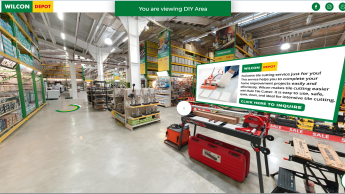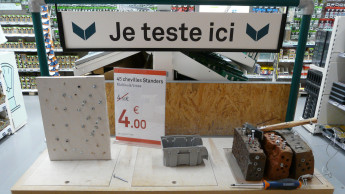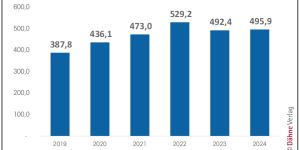

deep insights, facts & figures

China is also a gigantic domestic market for DIY products, though the established market participants are only slowly getting their act together
It is a truism to say that China is big. What is meant today is not just the sheer scale of the country or the size of the population, but also the economic power of the Middle Kingdom. The dimensions involved are frequently so huge that the outsider needs time to become – very slowly – accustomed to them. This also goes for everything concerning do-it-yourself or home improvement. The volume of DIY products leaving the People’s Republic is legion. The number of containers of products for DIYers that set off on their journey to North America and Europe every year is in the hundreds of thousands, even millions. And the DIY retailers who buy globally are not the only ones to stock up with goods in China: even well-known suppliers of branded products tend to have them produced here, albeit rather shamefacedly. However, the Chinese domestic market for DIY products also commands respect. The China National Interior Decoration Association estimates the number of shops selling products for DIYers at 40 000 across the country. Depending on the source, an annual figure of between € 33 bn and € 114 bn is put on the total volume of the Chinese DIY market. Li Fengjiang, CEO of Orient Home, the biggest Chinese player in the field, estimates that around € 817 bn was spent in 2009 on building and decorating products in China. And that was in a year when China was also suffering from the financial and economic crises. Li also estimates that about five per cent of the total was spent in regular DIY stores. Kingfisher in particular has suffered badly in this country, where it operates the group’s B&Q stores. The company was the first foreign marketer to enter the country in 1999. After losses valued at close to € 69 mio in 2008, B&Q decided to introduce a radical restructuring programme. And nowadays restructuring usually means closures or cutbacks. So 22 of the 63 B&Q outlets were closed down, and the store formats were reduced: retail space in 17 outlets was rented out to Walmart, Carrefour, Tesco and various others, so that the overall loss of floorspace suffered by B&Q was actually in excess of 40 per cent. At the same time the company parted from management that had been brought in from abroad and has since then relied on local executive staff. The Chinese subsidiary hopes to get back into the profit zone by 2011. So far with only moderate success, though: in 2009 the loss still amounted to around € 39 mio. The problem for B&Q was selling DIY…
Related articles
Read also

 Menü
Menü












 Newsletter
Newsletter